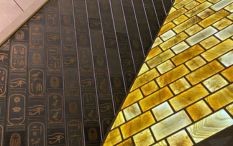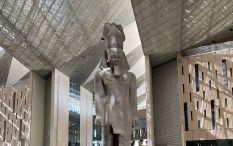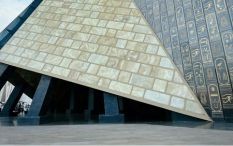
After much anticipation, the Grand Egyptian Museum is finally welcoming visitors during its soft opening. Tickets are now available, offering the chance to explore this stunning cultural landmark. To celebrate the occasion, we’re excited to share an overview of the 12 Main Galleries currently open to the public, which showcase a collection of over 15,000 ancient Egyptian artefacts.
These galleries are organised into four major sections, each representing a distinct era in Egypt’s rich history:

1- Prehistoric to The Second Intermediate Period
This section delves into the early development of Egyptian society, from the rise of the first unified kingdoms to the construction of Egypt’s monumental pyramids. It highlights the god-like role of the king in maintaining order and cosmic balance, with elaborate tombs and temples reflecting the divine relationship between rulers and the gods. The Old Kingdom‘s peak gives way to the First Intermediate Period, an era marked by fragmentation and the rise of powerful provincial governors.

2- Middle Kingdom to Second Intermediate Period
Here, visitors can witness the resurgence of centralised power in Egypt. This period is characterised by a more inclusive society, where common people began to access the elaborate funerary practices that were once reserved for royalty. The section also explores the expansion of beliefs surrounding the afterlife, with ritual objects, texts, and burial traditions becoming more accessible to ordinary Egyptians seeking divine protection.
3- New Kingdom
The New Kingdom represents the pinnacle of ancient Egypt’s imperial power, featuring iconic figures such as warrior-pharaoh Ramesses II and the powerful queen Hatshepsut. This era saw Egypt’s expansion through military conquest and trade, and it was marked by the construction of grand temples and offerings to gods like Amun-Ra. The afterlife was central to Egyptian beliefs, and the rich cultural heritage of this period is on full display through art, architecture, and religious practices.

4- Third Intermediate to Graeco-Roman Period
As Egypt transitioned to foreign rule, the society evolved, blending Egyptian traditions with those of the Greeks and Romans. This section showcases the fusion of cultures during the Ptolemaic Dynasty, which culminated in the reign of Cleopatra. Visitors will see how Egyptian religious beliefs and burial practices persisted even as new cultural influences, art, and religious traditions began to shape Egypt’s history.
TPT tours is now ready to help you book tickets for this world-class museum, allowing visitors to immerse themselves in Egypt’s ancient wonders. This is a unique opportunity to explore Egypt’s unparalleled history, art, and archaeology in a spectacular setting, making it a must-see destination for history enthusiasts and travellers alike.
